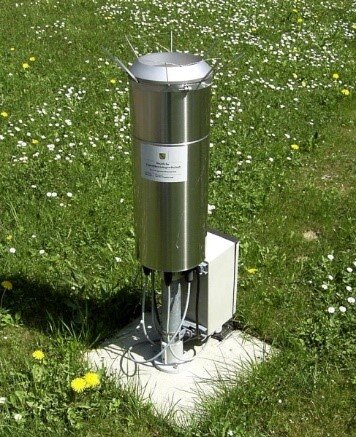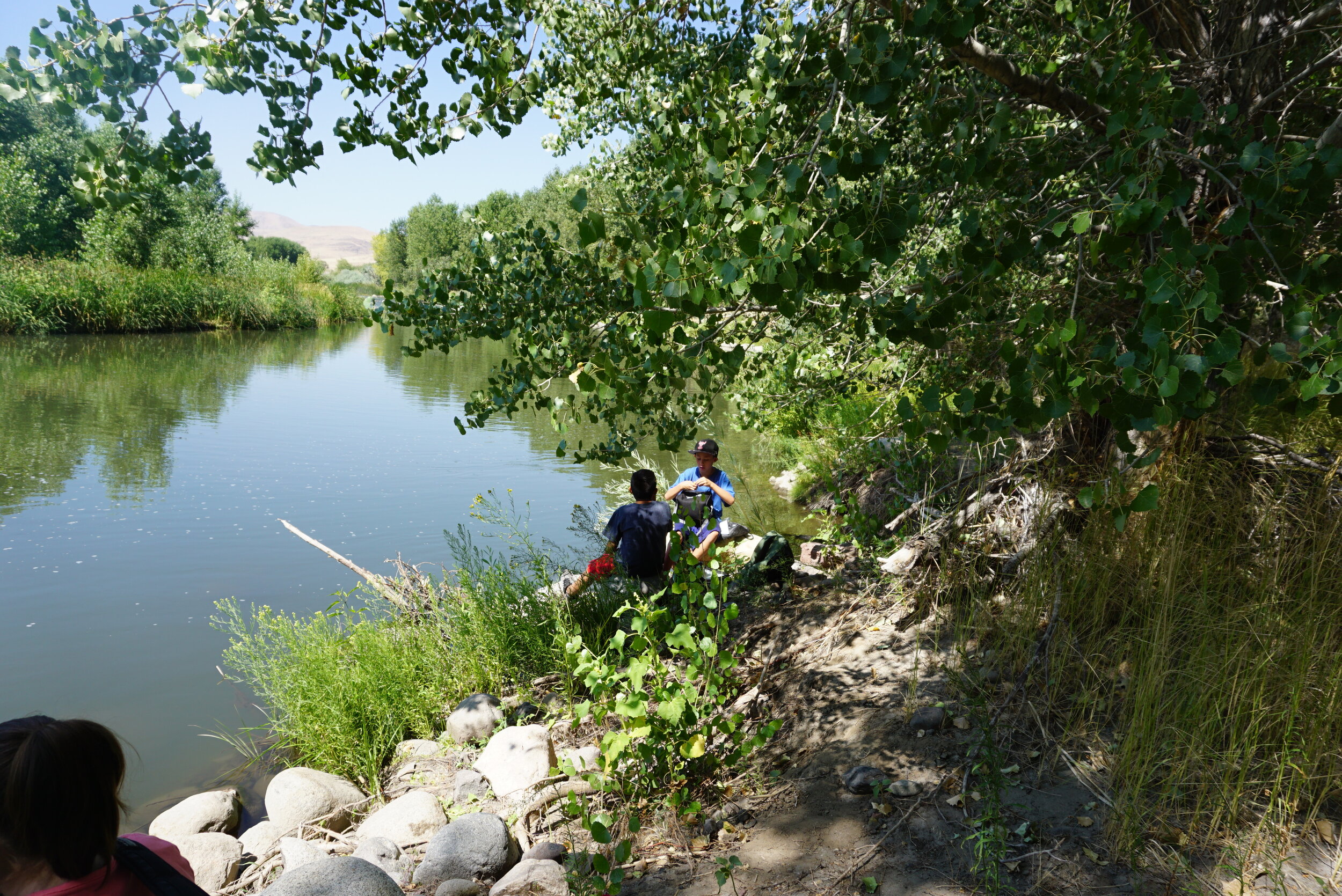FLOOD FIGHTERS - NORTHERN NEVADA
SIXTH - EIGHTH Grade Lessons
This unit was developed featuring Northern Nevada and uses Next Generation Science Standards. This unit was designed for middle school students and focuses on the NGSS standards MS-ESS3-2: Analyze and interpret data on natural hazards to forecast future catastrophic events and inform the development of technologies to mitigate their effects. It also includes lessons using MS-ESS3-3: Apply scientific principles to design a method for monitoring and minimizing a human impact on the environment. However, it can be used for other grade levels and areas as well.
These activities are listed in their recommended order. This order will help to deepen student understanding by building on concepts from activity to activity. However, they were also designed to provide students with enough information that they will make sense on their own.
Download Flood Fighters Teacher’s Guide with additional notes and timing for each lesson. If you are using Google Classroom, consider using kamiapp.com to easily integrate activity pages which are created as PDF Fillable Forms.
section 1: Flood Awareness
Activity 1: Flood Investigation
Students activate their prior knowledge about floods and ask questions they hope to have answered throughout the unit. They will also look at a picture and read a caption about the 1997 Reno flood and come up with as many questions as they can come up with.
Download Flood Investigation Activity Page
Spanish Flood Investigation Activity Page
NGSS: MS-ESS3-2: Analyze and interpret data on natural hazards to forecast future catastrophic events and inform the development of technologies to mitigate their effects.
Activity 2: Storm Impact
NGSS: MS-ESS3-2: Analyze and interpret data on natural hazards to forecast future catastrophic events and inform the development of technologies to mitigate their effects.
Students read an article from the Reno Gazette Journal about the flood of 1997 and answer questions about it.
If you don’t have an RGJ subscription, download the article and photo gallery here >>
Snow, floods, dust: 8 of the worst storms in Northern Nevada since the 1990s
Download Storm Impact Activity Page
Spanish Storm Impact Activity Page
Giant waves on Lake Tahoe during the Flood of ‘97, RGJ
South Virginia Street and Holcomb Ranch Road - Flood of ‘97, RGJ
Activity 3: Flood Prediction
NGSS: MS-ESS3-2: Analyze and interpret data on natural hazards to forecast future catastrophic events and inform the development of technologies to mitigate their effects.
Learn about the various points of data scientists need in order to predict and help mitigate the effects of floods. Students will be given the opportunity to analyze data and figure out what other information they may need to safely predict a flood.
Activity 4: GAME: Play Flood Fighters
NGSS: MS-ESS3-2: Analyze and interpret data on natural hazards to forecast future catastrophic events and inform the development of technologies to mitigate their effects.
Play all six rounds of Flood Fighters in order to deepen your understanding of how scientists use data to predict floods.
Free download from NevadaFloods.org. Available only in English.
section 2: Human Impact
Activity 5: Exploring Debris
NGSS: MS-ESS3-3: Apply scientific principles to design a method for monitoring and minimizing a human impact on the environment.
Students explore how debris caused by humans can affect flooding through a hands-on experiment.
Download Exploring Debris Activity Page
Spanish Exploring Debris Activity Page
Activity 6: River Straightening
NGSS: MS-ESS3-3: Apply scientific principles to design a method for monitoring and minimizing a human impact on the environment.
Students participate in a hands-on experiment to explore how straightening the river can increase the effects of flooding.
Download River Straightening Activity Page
Spanish River Straightening Activity Page
Activity 7: Floodplain Building
NGSS: MS-ESS3-3: Apply scientific principles to design a method for monitoring and minimizing a human impact on the environment.
Through a hands-on activity, students study the impact of building in a floodplain.
Download Floodplain Building Activity Page
Spanish Floodplain Building Activity Page
Activity 8: Removing Wetland Areas
NGSS: MS-ESS3-3: Apply scientific principles to design a method for monitoring and minimizing a human impact on the environment.
In this activity, students experiment with the different absorbency properties of pavement and dirt to study how replacing wetland areas with housing developments affects flooding.
Download Removing Wetland Areas Activity Page
Spanish Removing Wetland Areas Activity Page
section 3: Flood Prevention
Activity 9: Budget Planning
Students work alone or in a small group to develop a city-wide flood prevention plan. They have to keep their plan within a set budget and base it on data about their city.
Download Budget Planning Activity Page
Spanish Budget Planning Activity Page
NGSS: MS-ESS3-2: Analyze and interpret data on natural hazards to forecast future catastrophic events and inform the development of technologies to mitigate their effects.
MS-ESS3-3: Apply scientific principles to design a method for monitoring and minimizing a human impact on the environment.
Activity 10: Design Your Plan
NGSS: MS-ESS3-2: Analyze and interpret data on natural hazards to forecast future catastrophic events and inform the development of technologies to mitigate their effects.
MS-ESS3-3: Apply scientific principles to design a method for monitoring and minimizing a human impact on the environment.
Students design how they want their city to look with the added flood prevention measures by picking a medium to create their city. Some ideas for this could include a detailed drawing of their city, a 3D model made out of paper or clay, or even a computer-generated 3D model, if the student has the skills necessary.
Download Design Your Plan Activity Page
Spanish Design Your Plan Activity Page
Activity 11: Plan Evaluation
NGSS: MS-ESS3-2: Analyze and interpret data on natural hazards to forecast future catastrophic events and inform the development of technologies to mitigate their effects.
MS-ESS3-3: Apply scientific principles to design a method for monitoring and minimizing a human impact on the environment.
Students present their plans to the city. They will explain why they made the choices they did, as wells as, how they used the data to make their choices. As the other students are listening, they will fill out a Plan Evaluation Science Activity Page for each presentation to help make that plan stronger. At the end of all of the presentations, the students will act as a planning committee and vote to see which plan seems like the best idea to implement.
Download Plan Evaluation Activity Page
Spanish Plan Evaluation Activity Page
Return to All Free Grade-Level Lessons.













